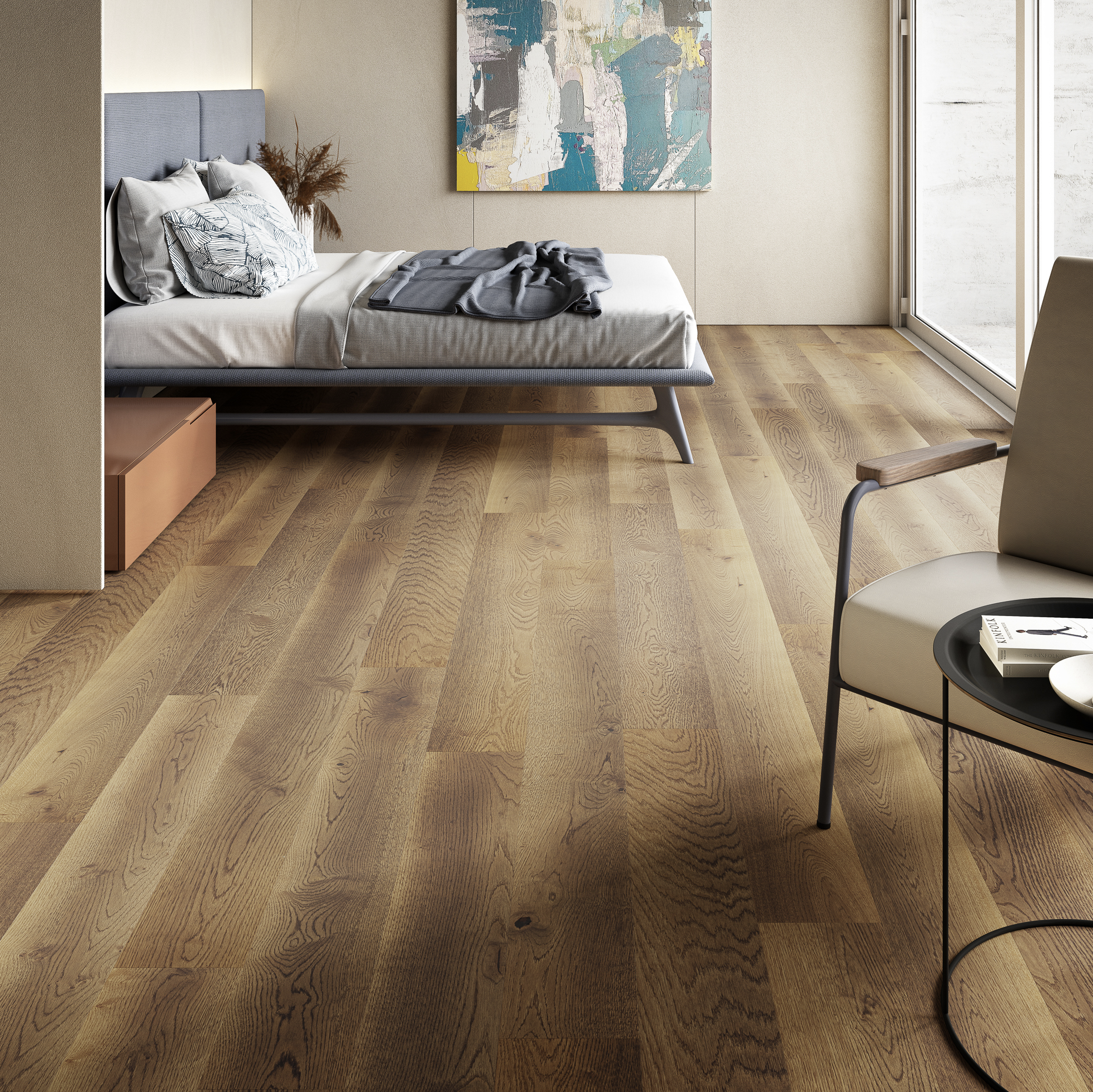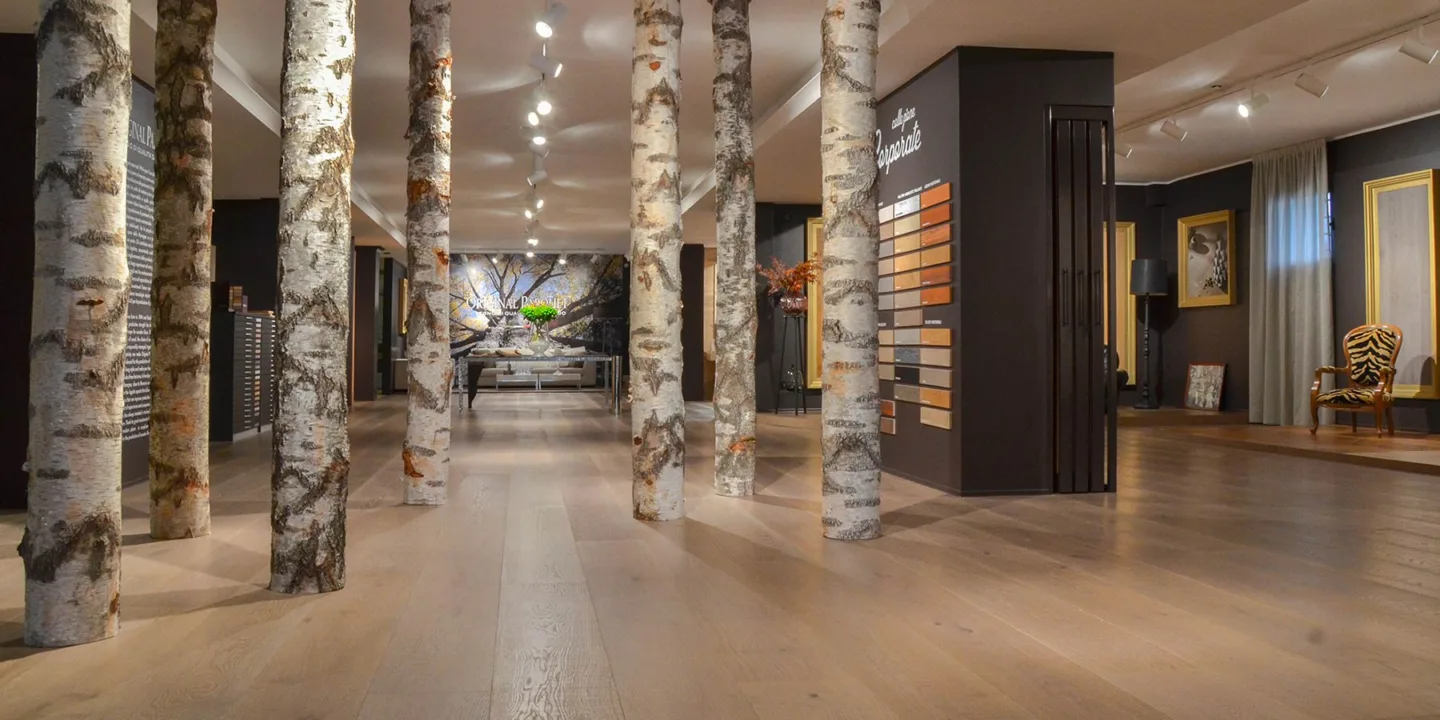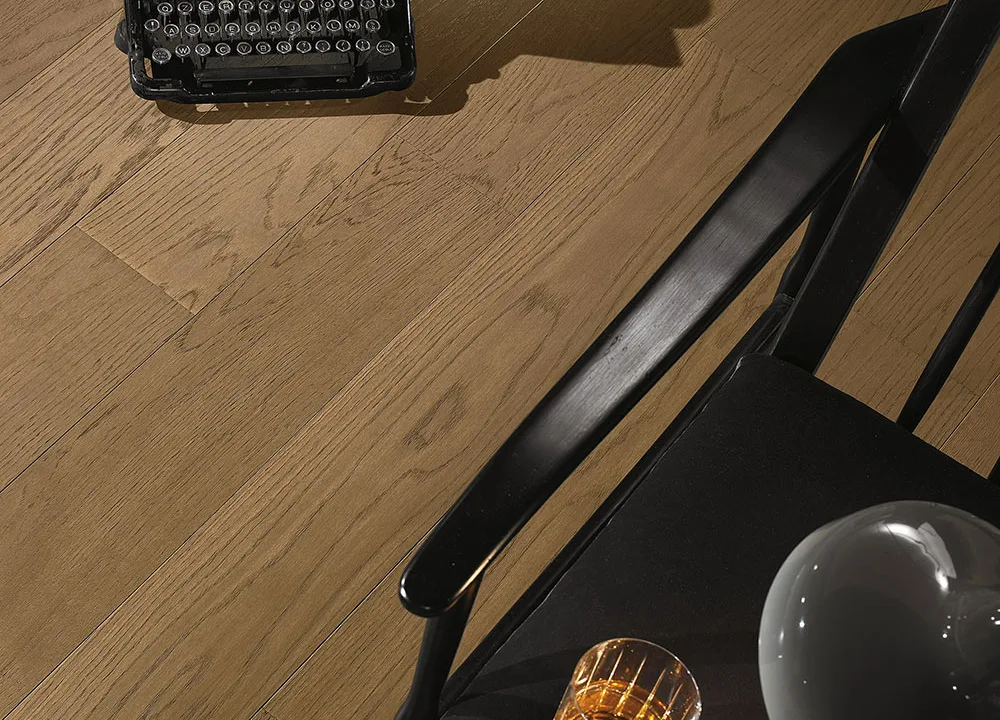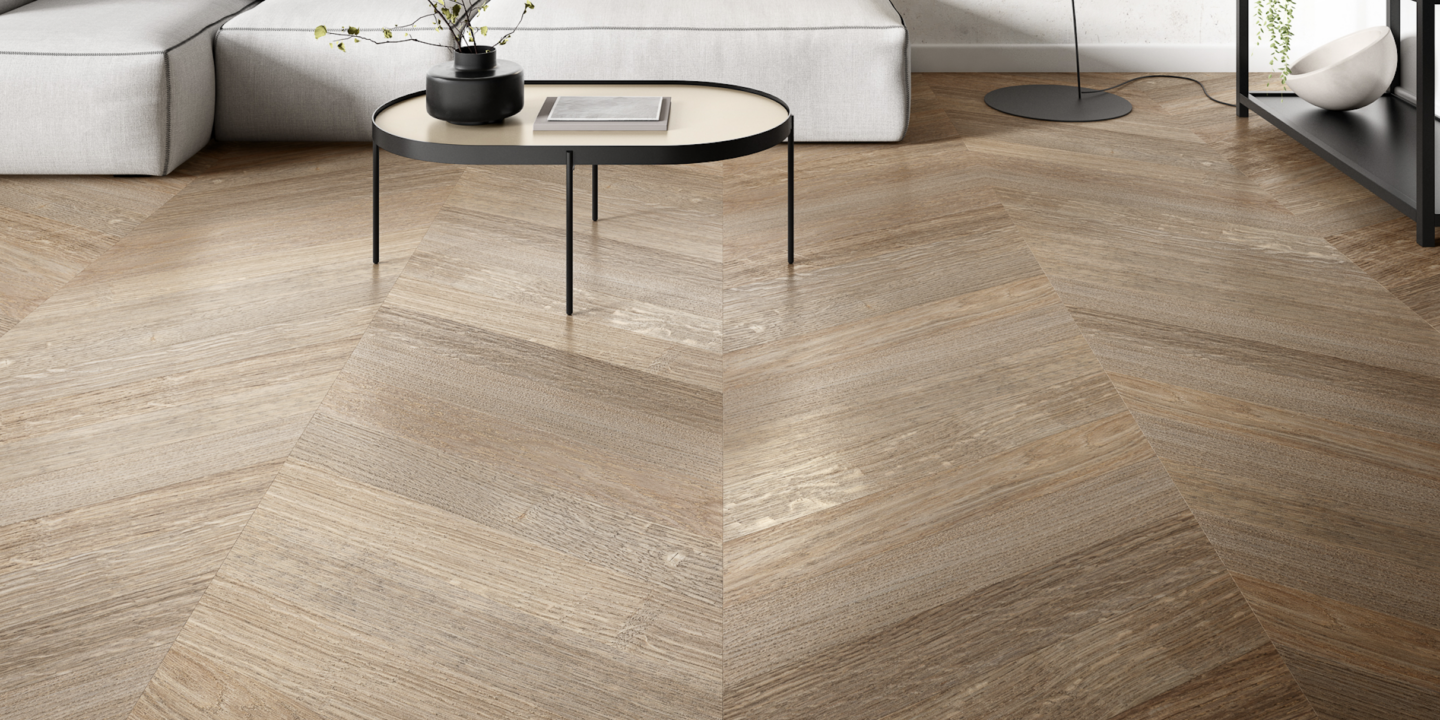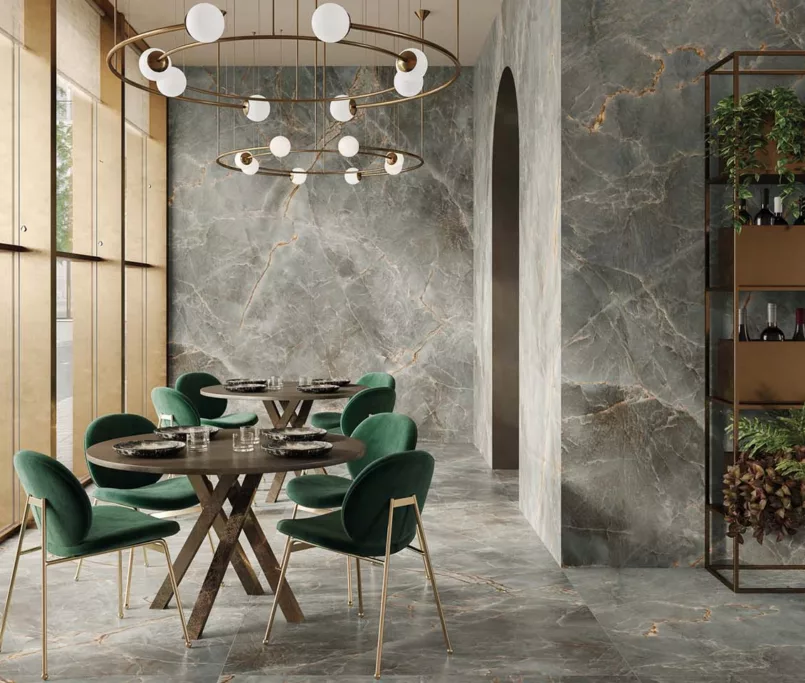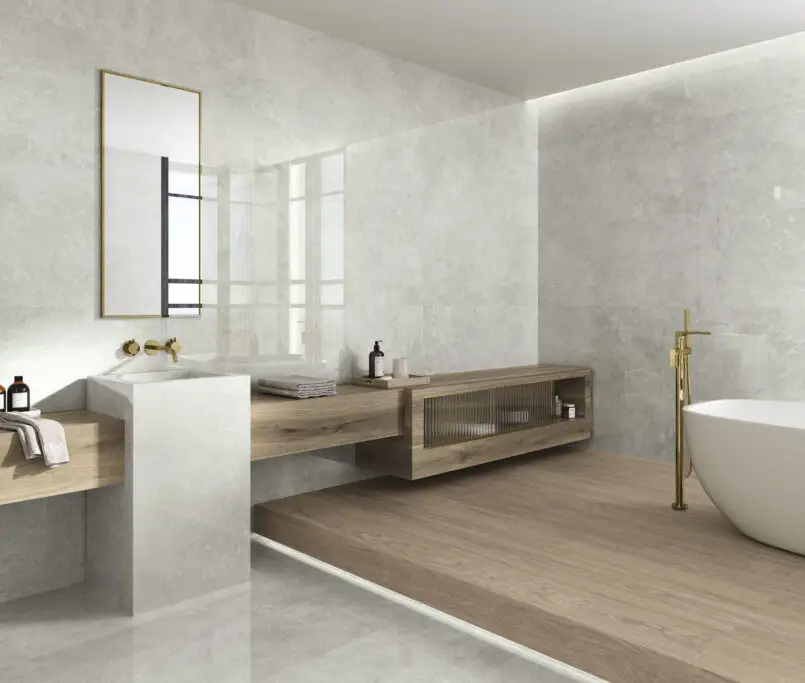The Truth About Engineered Oak Flooring: Why Not All Oak Floors Are Created Equal
When it comes to engineered oak flooring, the choices on the market can feel overwhelming. Prices vary wildly. Salespeople talk about “thicker wear layers,” “European oak,” and “factory finishes.” Some offer jaw-dropping deals, promising thick oak boards at half the price of big brands. So, what’s really going on? Why do some engineered floors cost more, and does a thicker wear layer actually mean better quality?
At Aura Surfaces, we believe in honesty, education, and value for money. That’s why we only work with manufacturers like Original Parquet and Italiana Parquet; brands that have earned our trust through decades of delivering consistent, beautiful, and long-lasting floors.
In this in-depth guide, we’ll uncover the truth about Engineered Oak Flooring, and why not all oak floors are created equal, so you can make the right choice for your home or project, without falling for marketing gimmicks or false economies.
What is Engineered Oak Flooring?
Engineered oak flooring is a multi-layered product. The top layer, called the “wear layer”, is real oak. Beneath that are several layers (or “plies”) of birch, poplar, or other hardwoods, laid in alternating directions for stability.
Key benefits:
- Stability: Resists warping and shrinking better than solid oak does, especially over underfloor heating.
- Versatility: Can be made wider and longer than solid boards.
- Eco-Friendly: Uses less precious oak than a solid board.
But here’s the catch: not all engineered oak is created equal. The quality, origin, and even the species of the oak, and the way it’s constructed, make a huge difference.
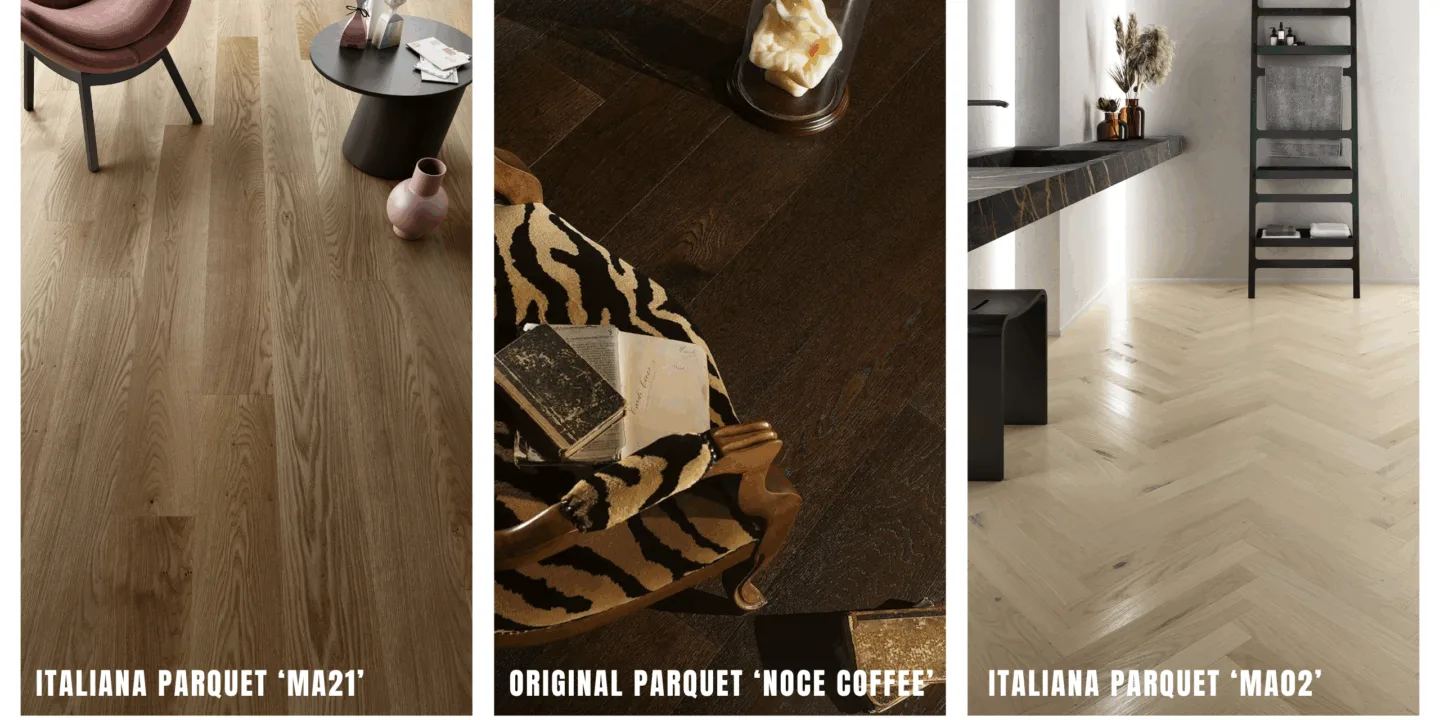
Why Is There Such a Huge Variation in Price?
The short answer? Because there’s a massive difference in the raw materials, manufacturing methods, and the ethics behind the products.
1. The Source of the Oak: Fast-Grown vs. Slow-Grown
- Slow-Grown European Oak (France, Italy, Germany, Croatia):
- Denser, harder, and more stable.
- Tighter grain, richer colour, fewer defects.
- Grows over decades in managed forests.
- Fast-Grown Plantation Oak (Often from China and parts of Eastern Europe):
- Grown quickly with heavy fertilisers and irrigation.
- Wider growth rings, softer, less dense.
- Cheaper to produce, but less durable.
Why does it matter?
A thick wear layer of fast-grown, soft oak will dent, scratch, and wear out much faster than a thinner layer of slow-grown, dense European oak.
2. Wear Layer Thickness: Not Always What It Seems
Many budget brands boast about “thicker wear layers”, sometimes 5 or 6mm. But here’s what they don’t tell you:
- If the oak itself is low density, thickness doesn’t equal durability.
- Cheaper manufacturers may use thick, poor-quality oak to “pad out” the board, hiding the fact that it’s softer, more prone to dents, and wears out sooner.
- High-end European floors can use a 3–4mm wear layer of dense, slow-grown oak and still outlast a 6mm wear layer of plantation-grown wood.
3. The Core Makes the Floor
- High-quality engineered boards use multi-layered birch or hardwood cores, glued with waterproof, low-emission adhesives.
- Cheap boards may use softwoods, poplar, or even MDF, which can swell, delaminate, or off-gas chemicals (formaldehyde) over time.
- The result? Cheap cores = movement, squeaks, warping, and floors that just don’t last.
4. Finishes, Glues & Safety Standards
- Top European brands use tested, safe, UV-cured finishes and adhesives that meet or exceed European regulations for indoor air quality.
- Many cheap imports, particularly from China, still use high-VOC adhesives, untested lacquers, or shortcut production methods. These floors can off-gas chemicals for years and have even been recalled due to safety concerns.
How to Spot a Quality Engineered Oak Floor
- Check the Origin:
- Ask for proof of where the oak comes from.
- European oak (French, Italian, Croatian, German) is the gold standard.
- Ask About the Core:
- Birch ply cores are the most stable and long-lasting.
- Avoid “poplar” or softwood/MDF cores for high-traffic or humid areas.
- Inspect the Wear Layer:
- 3–4mm of slow-grown, dense oak will outperform a thicker layer of fast-grown, soft oak.
- Test the Finish:
- Look for brands that use UV-cured oils or lacquers with low VOCs and proven durability.
- Warranties & Certifications:
- Does the floor carry a warranty from a reputable European manufacturer?
- Look for FSC, PEFC, and E1 or better emission ratings.
Why “Thicker” Isn’t Always “Better” – The Wear Layer Myth
A common misconception:
“If the top oak layer is thicker, I’m getting better value for money.”
The truth:
A thick layer of poor oak is just a thicker layer of disappointment! Here’s why:
- Low-density, fast-grown oak wears out quickly.
- A thick, soft wear layer can dent, scratch, or splinter more easily than a thinner, hard layer.
- “Thick” can also mean “wasteful.” Once a cheap floor is damaged or the finish fails, thickness won’t save it from replacement.
It’s not about thickness—it’s about quality.
A high-density, slow-grown oak layer of 3–4mm from Europe can be sanded and refinished once or twice, and will look and perform better for decades.
Why We Choose Original Parquet & Italiana Parquet
We’re not just suppliers, we’re passionate about delivering floors that last, that add value, and that make your home or project shine for years to come.
Here’s why we trust Original Parquet and Italiana Parquet:
- European Sourcing and Heritage
Both brands use only the finest European oak that’s sustainably sourced, slow-grown, and beautifully milled. Their relationships with sawmills and foresters go back generations, ensuring consistency, responsible harvesting, and a beautiful end product.
- Best-in-Class Construction
- Multi-layer birch ply cores for maximum stability.
- Superior adhesives and finishes for low emissions and high durability.
- Every board is individually checked for quality, grain, and finish.
- Bespoke Service
With both brands, we can offer:
- A huge range of widths, grades, colours, and finishes.
- Full colour-matching to designer specifications (as we’ve done on recent projects).
- Custom patterns: herringbone, chevron, Versailles panels, and more.
- Certified, Safe, and Sustainable
- FSC/PEFC certified.
- Compliant with the strictest European standards for emissions and safety.
- Proven in commercial, high-traffic, and luxury residential settings.
It’s tempting to go with the lowest price, especially when the boards look “the same” on the surface. But here’s what happens with budget flooring:
- It dents and scratches easily (soft, low-density oak).
- Finishes wear out faster (cheap lacquers or oils).
- Movement and warping (inferior core materials, poor adhesives).
- Hidden emissions (unsafe adhesives and finishes).
- Short warranty (or no real support at all).
- Costly to replace, and the disruption is never worth it.
Cheap floors look cheap, feel cheap, and don’t last. The money you “save” up front is lost many times over in maintenance, repair, or early replacement.
Frequently Asked Questions
Q: Is a thicker wear layer always better?
A: No. The quality and density of the oak matter more. Thick, low-quality oak wears out quickly. Thin, dense European oak performs better and lasts longer.
Q: Where is the best oak for flooring from?
A: The best oak comes from slow-grown European forests: France, Italy, Germany, Croatia. These trees grow slowly, producing denser, harder wood.
Q: What’s the difference between birch ply and poplar ply?
A: Birch ply is stronger, more stable, and better for longevity. Poplar and softwood cores are weaker and more likely to swell, warp, or delaminate over time.
Q: Are all engineered woods safe?
A: No. Some cheap imports use high-emission glues or finishes that can off-gas for years. Always check for European emissions certifications (E1 or better).
Q: Can you refinish engineered oak floors?
A: Yes, most good-quality engineered floors with a 3–4mm wear layer can be sanded and refinished once or twice.
Our Promise: Only the Best for Your Project
At Aura Surfaces, we don’t cut corners and we don’t gamble with your investment.
That’s why we only use trusted, premium suppliers like Original Parquet and Italiana Parquet. We work closely with our clients, designers, and architects to ensure every floor is the right floor; beautiful, durable, safe, and designed to last.
If you want to learn more, see real samples, or arrange a site visit, get in touch with our team. We’re always happy to help you make an informed, confident decision.


